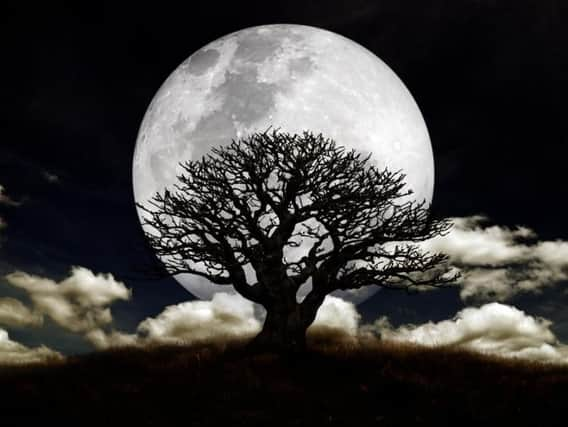Largest supermoon in 70 years visible tonight


At 216,486 miles from us, it will be at its closest since 1948 and will not be this close again until November 2034.
The moon appears larger in diameter because it is closer and because of this it also shines around 30% more light onto the Earth making it unusually bright.
Advertisement
Hide AdAdvertisement
Hide AdDr Michael Brown, an astronomer at Monash University, Australia, says that the best way to appreciate the increase in size is to compare it to other objects as it rises explaining: “When the moon is close to the horizon and you can see it next to trees it does look bigger than when it’s up in the sky in isolation.”
Look at sunset
As it is a full moon, it will rise at about the same time as sunset so you don’t have to stay up to see it. If the sky is clear, it will be seen rising in the East as the sun sets in the West – start looking around 4.40pm.
“I’d suggest that you head outside after sunset, or once it’s dark and the Moon is a bit higher in the sky. You don’t have to stay up all night to see it, unless you really want to!” says Noah Petro of NASA’s Lunar Reconnaissance Orbiter mission.
Photographers may get lucky with an orange/red coloured moon as it reflects the colours of the setting sun, although the moon will a be at its brightest a few hours later when the sky is dark.
Advertisement
Hide AdAdvertisement
Hide AdDon’t worry if it is cloudy tonight, as it will still be pretty large on the nights either side, just not completely full.
Elliptical orbit causes supermoons
The moon is periodically closer to the Earth as it does not follow a circular orbit around the Earth but an elliptical one bringing the moon closer and further from us during each individual 28 day orbit. Its closest position to earth is called the perigee and its most distant is the apogee.
Full moons occur when the moon is directly on the opposite side of the earth to the sun. Slight changes in the elliptical orbit means that some perigrees, like tonight’s, bring the moon particularly close to the Earth.